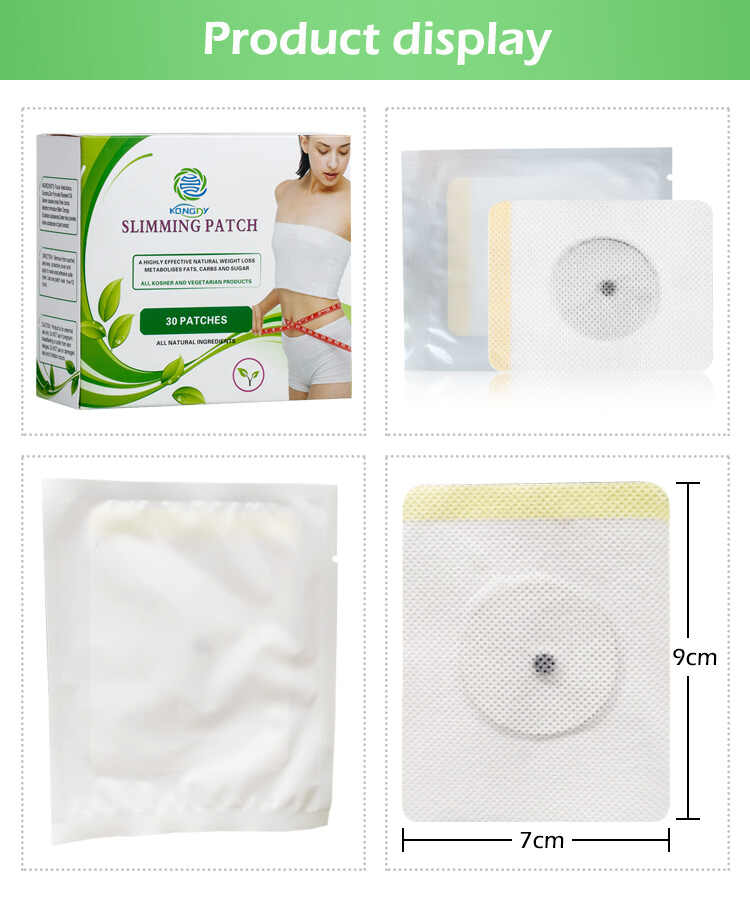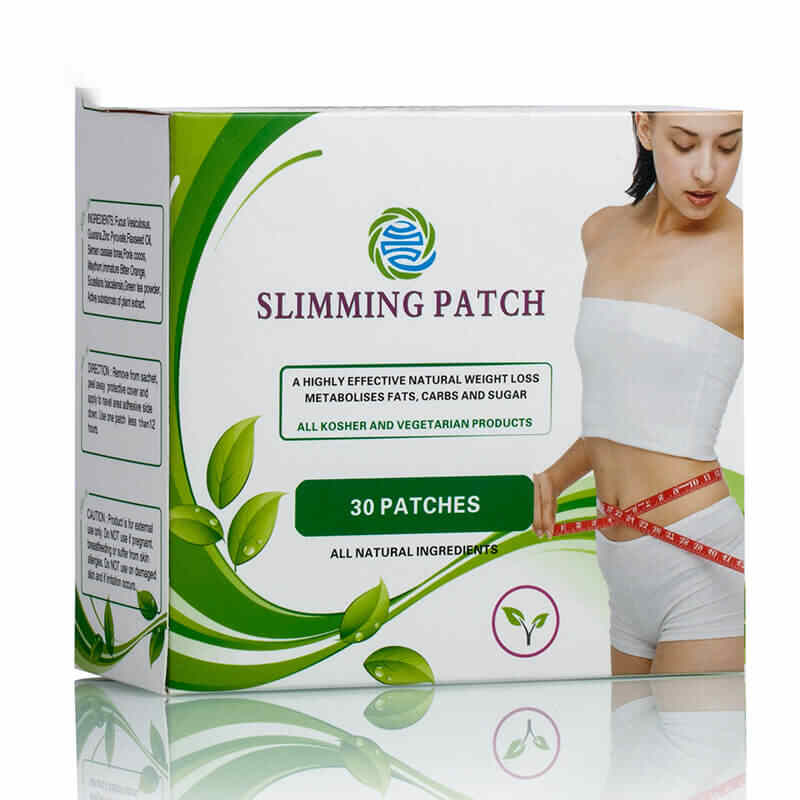Custom vs. Private Label Transdermal Slimming Patches: Which Is Best for Your Strategy?
The wellness industry is expanding rapidly, and transdermal slimming patches have become one of the most sought-after products for weight management and lifestyle support. With increasing consumer demand for convenient, effective, and natural solutions, businesses are turning to transdermal slimming patches OEM (Original Equipment Manufacturer) partners to help them launch or expand their product lines.
But here comes the critical question: Should your brand invest in Custom transdermal slimming patches or go with Private Label transdermal slimming patches? The answer depends on your business strategy, growth goals, and target market.
In this article, we’ll explore the advantages and limitations of each option, the role of a transdermal slimming patches Manufacturer and Supplier, and how to determine the best strategy for your business.

Understanding the OEM Landscape for Transdermal Slimming Patches
A transdermal slimming patches OEM acts as the backbone of the slimming patch business. Instead of building expensive manufacturing facilities, brands can rely on OEM partners to:
Produce high-quality patches under strict compliance.
Offer scalable production, from small batches to large orders.
Provide Custom and Private Label options tailored to different business needs.
Ensure quality consistency through advanced manufacturing technologies.
By collaborating with the right transdermal slimming patches Manufacturer or Supplier, you can focus on branding, marketing, and distribution, while your partner ensures product reliability and innovation.
What Are Private Label Transdermal Slimming Patches?
Private Label transdermal slimming patches are pre-formulated, ready-to-market products created by OEMs. Businesses simply add their branding, packaging, and marketing strategy to launch quickly.
Advantages of Private Label Slimming Patches
Speed-to-Market: No need for lengthy R&D—products are ready for immediate branding and sales.
Lower Investment: Minimal upfront costs compared to developing Custom products.
Proven Formulations: Patches are already tested, stable, and often backed by consumer data.
Reduced Risk: Since the formulations are pre-approved, businesses face fewer risks of product failure.
Limitations of Private Label Slimming Patches
Limited Differentiation: Competitors may be selling similar formulations.
Less Control: You can’t fully customize ingredients or features.
Brand Positioning Challenges: May be harder to build a unique premium identity.
Private Label solutions are ideal for startups, small businesses, or brands seeking to quickly test market demand before scaling up.
What Are Custom Transdermal Slimming Patches?
Custom transdermal slimming patches are designed specifically for your brand. OEMs work with you to develop unique formulations, packaging, and delivery systems that align with your vision.
Advantages of Custom Slimming Patches
Unique Differentiation: Custom patches allow you to stand out with exclusive ingredients or technologies.
Targeted Solutions: Formulations can be tailored to specific demographics, such as athletes, postpartum women, or vegan consumers.
Stronger Brand Identity: Customization enhances brand storytelling and long-term positioning.
Higher Profit Margins: Unique products can often command premium pricing.
Limitations of Custom Slimming Patches
Longer Time-to-Market: Custom formulations require R&D, testing, and compliance verification.
Higher Costs: More investment is needed for development and small-batch production.
Greater Risk: New formulations carry the risk of uncertain consumer acceptance.
Custom solutions are better suited for established businesses with the resources and vision to create unique offerings that stand out in the slimming patches market.
Comparing Custom vs. Private Label Slimming Patches
| Criteria | Custom Transdermal Slimming Patches | Private Label Transdermal Slimming Patches |
|---|---|---|
| Time-to-Market | Longer (6–12 months) | Fast (weeks to months) |
| Cost | Higher (R&D, testing, design) | Lower (ready-made solutions) |
| Differentiation | High (unique formulas, branding) | Low to medium (shared formulations) |
| Risk | Higher (new product acceptance uncertain) | Lower (proven market-ready products) |
| Brand Positioning | Premium, niche-focused | Mass-market, budget-friendly |
| Best For | Established businesses seeking uniqueness | Startups or fast-launch brands |
The Role of the Right Transdermal Slimming Patches Manufacturer
Whether you choose Custom or Private Label, the transdermal slimming patches Manufacturer or Supplier you work with plays a decisive role in your success. A reliable partner provides:
Quality Control: Ensuring patches meet international standards (GMP, ISO, FDA compliance).
Flexibility: Offering both small and large order capabilities.
Innovation: Staying ahead with new transdermal technologies.
Support: Guidance on packaging, regulations, and market trends.
A forward-thinking transdermal slimming patches Supplier will not just produce your products but also act as a strategic partner in your brand’s growth journey.
Strategic Considerations for Choosing Between Custom and Private Label
Your Business Stage
If you’re a startup, Private Label is a safer and faster option.
If you’re established, Custom patches can boost your long-term brand value.
Market Competition
In saturated markets, Custom patches can help you stand out.
In emerging markets, Private Label patches may be enough to capture share.
Budget and Resources
Private Label requires less investment and is less risky.
Custom patches need more funding but offer bigger long-term rewards.
Brand Goals
Short-term revenue growth? Choose Private Label.
Building a premium, unique brand identity? Choose Custom.
How OEM Partnerships Drive Growth
Working with the right transdermal slimming patches OEM partner brings growth advantages beyond product manufacturing:
Faster Expansion: Launch multiple product lines with OEM support.
Consumer Trust: Reliable quality builds loyalty and repeat sales.
Innovation Pipeline: Access to the OEM’s R&D for future product ideas.
Global Reach: OEM partners often have compliance knowledge for international markets.
Conclusion
Choosing between Custom transdermal slimming patches and Private Label transdermal slimming patches is a strategic decision that shapes your brand’s future. Private Label options are excellent for businesses seeking a quick, cost-effective entry into the market, while Custom solutions empower established brands to differentiate, command higher margins, and build long-term loyalty.
Ultimately, success depends on your choice of transdermal slimming patches Manufacturer, OEM, or Supplier. The right partner ensures quality, innovation, and scalability, allowing your business to thrive in the competitive wellness industry.
Related Questions and Answers
Q1: What is the main difference between Custom and Private Label transdermal slimming patches?
A1: Custom patches are uniquely formulated and designed for your brand, while Private Label patches are pre-made products you can quickly rebrand and sell.
Q2: Are Private Label transdermal slimming patches good for startups?
A2: Yes, they are ideal for startups due to lower costs, faster time-to-market, and reduced risk.
Q3: Why would a brand choose Custom transdermal slimming patches?
A3: Custom patches allow for unique formulations, premium positioning, and stronger brand identity.
Q4: How can a transdermal slimming patches Manufacturer ensure my product stands out?
A4: By offering Custom formulation options, innovative packaging, and compliance with international quality standards.
Q5: Can I start with Private Label and later move to Custom transdermal slimming patches?
A5: Absolutely. Many businesses begin with Private Label to test the market, then invest in Custom patches as they grow.






